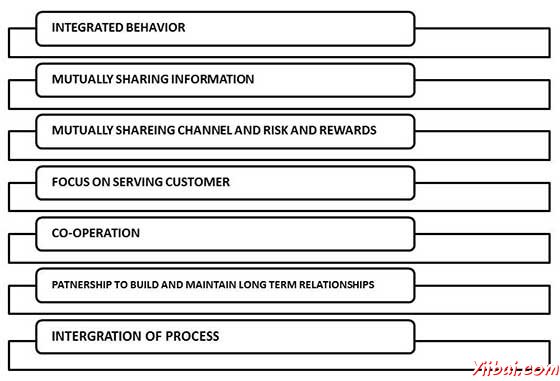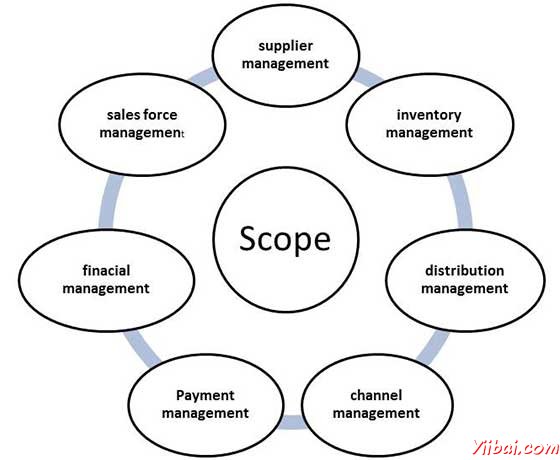供應鏈管理(SCM)- MIS系統
供應鏈管理的定義和含義
供應鏈管理是系統性,戰略性的協調,傳統的業務功能和戰術,在這些業務功能 - 在一個特定的公司和整個企業內的供應鏈協調,以改善個別公司的長期效能和供應鏈作為一個整體。
在一個傳統的製造環境中,供應鏈管理意味著管理運動和儲存的原材料,在製品存貨及製成品從起源點消費點。
它涉及到管理的網路互連的較小的經營單位,網路渠道參與生產商品的終端使用者或客戶要求的服務包。
隨著業務交叉當地市場的障礙,並達成了一個全球性的情況下,供應鏈管理(SCM)現在被定義為:
設計,規劃,執行,控制和監控供應鏈活動與建立淨值,具有競爭力的基礎設施建設,充分利用全球的物流,供需同步,全球測量效能的目標。
供應鏈管理包括:
-
運營管理
-
後勤/物流
-
採購
-
資訊技術
-
綜合業務運營
供應鏈管理的目標
-
為了降低庫存成本,通過更準確地預測需求和排程生產,以配合它。
-
為了降低整體生產成本,簡化生產和改善資訊流。
-
為了提高客戶滿意度。
供應鏈管理的特點

供應鏈管理的周期範圍

SCM流程
-
客戶關係管理
-
客戶服務管理
-
需求管理
-
客戶訂單履行
-
生產流程管理
-
採購管理
-
產品開發和商業化
-
退貨管理
SCM的優點
供應鏈具有多維的優勢:
-
供應商:
-
Help in giving clear-cut instruction
-
Online data transfer reduce paper work
-
-
庫存經濟:
-
Low cost of handling inventory
-
Low cost of stock outage by deciding optimum size of replenishment orders
-
Achieve excellent logistical performance such as just in time
-
-
分布點:
-
Satisfied distributor and whole seller ensure that the right products reach the right place at right time
-
Clear business processes subject to fewer errors
-
Easy accounting of stock and cost of stock
-
-
渠道管理:
-
Reduce total number of transactions required to provide product assortment
-
Organization is logically capable of performing customization requirements
-
-
財務管理:
-
Low cost
-
Realistic analysis
-
-
執行效能:
-
It involves delivery speed and consistency.
-
-
外部的客戶:
-
Conformance of product and services to their requirements
-
Competitive prices
-
Quality and reliability
-
Delivery
-
After sales services
-
-
員工和內部客戶:
-
Teamwork and cooperation
-
Efficient structure and system
-
Quality work
-
Delivery
-